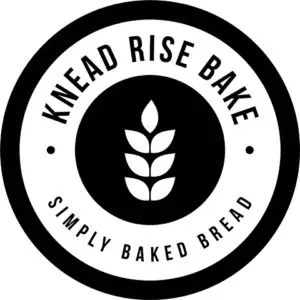If you’ve ventured down the lamination trail, as we recently did, you probably need a hug. Bring it in. Don’t be shy. It’s a long road to mastering the art of the croissant. To be honest, we are far from the finish line on this one. But we are learning from our share of mistakes from our pursuit of nailing the perfect croissant.
One of my biggest concerns heading into making croissants had to do with finding the right butter. Especially since I live in the U.S., where I had been told the right kind of butter for croissants is almost impossible to get my hands on. So I spent an insane amount of time reading French pastry blogs and books and watching an unhealthy amount of videos on the topic. I was relieved to find out that I’d be able to make perfectly wonderful croissants in the U.S. using butter I can find in most supermarkets.
The best butter for the home baker making croissants is slow-churned European style butter that contains at least 82% butterfat. This type of butter will contain less air and water which makes it more pliable and resistant to being absorbed in dough during lamination.
If you’ve heard that you should look for 83-85% butterfat or professional-grade laminating butter that has a higher melting point, I’m not contradicting that advice here. However, the reality is that professional-grade butter like that is incredibly hard to find, and often is not made available to the general market.
This means, if you aren’t a professional pastry chef, you likely will not have access to the “perfect” croissant butter. But do not be dismayed, I came across plenty of chefs during my research who shared that using the 82% supermarket butter is the ideal choice for home bakers. I even saw a few suggest the higher grade professional butter isn’t worth the expense or trouble to track down, revealing that they use 82% themselves.
If you are an ultra-purist when it comes to croissants, then perhaps the only recipe that will satisfy your needs will involve a 48-hour round-trip flight to Paris. Unfortunately, we’re not a travel blog and we cannot help you there. But if you are less of a purist and more like me and you just want to make the best croissants you can at home, then stick with me here and I’ll give you some recommendations for some of the best butter you can easily get your hands on, including tips on working with this type of butter to ensure it’s a success.
What Brands of Grocery Store Butter Meet the Croissant Standard?
This list is far from exhaustive, but the intention is to give you a shortlist of brands that you can keep in mind when visiting your local grocery store. You should be able to spot one of these somewhere near you.
Plugra – Out of the common grocery store brands of butter, this has the highest amount of butterfat content between 82-83%. It is slow-churned in the European style which makes it ideal for lamination. This is our top choice.
Kerrygold – This one clocks in under Plugra for butterfat content, but still hits the 82% slow-churned needs for laminating. I find Kerrygold runs a little on the soft side, which means you need to take extra care to keep your dough and butter cold (more frequent rests in the fridge during lamination). We find Kerrygold is the easiest to get our hands on as it’s everywhere, which is the primary reason it made our list. Our very first attempt at croissants was made with Kerrygold.
President – This one isn’t as easy to find in supermarkets but can be found in several major chains. It hits the same standards needed as the others mentioned above. It’s one that I’ve never used, but I saw it pop up as a suggestion in several French blogs for croissants.
What if I Want the 85% Butterfat Butter?
If you live in the U.S. and really want to get your hands on 85% butterfat, you might be able to find it near you. You’ll likely need to track down a health food store in your area in order to do so. Our local health food store carries a few 85% butterfat butter options. Yours might too. We even have some of these options at the Sprouts in our town.
Straus Family Creamery is our favorite brand, and they actually produce 85% butterfat butter the old-fashioned way, in a 70-year-old small churn. It’s not cheap, but considering they run at such a small scale, it’s not exactly expensive either. If you have a desire to make the purest croissants you possibly can in The States, then give this one a go.
The reality though, is that the 85% butterfat isn’t likely going to be life-changing. But it will hold up better to rolling which should allow you to work a little longer between chilling.
Tips For Working With 82% Butterfat
If you’ve decided to go with the easy-to-find European style supermarket butter, you’re going to find that you don’t have a lot of time to roll your dough out before the butter starts to soften too much to work with. To be certain, they will be less resistant to absorption than the typical 80% American style butter, but you’ll still need to take great care to keep things cool while you’re working with your dough. This also has to do with using a hand roller instead of a lamination machine, but nonetheless, you’re more than capable of producing amazing croissants this way.
Our key tips are as follows:
- Make sure your kitchen is relatively cold, preferably under 70°F, and the lower the better. I try to do the rolling stages early in the morning and run air conditioning to get the temp to 65° F.
- Place an ice pack or bags of frozen peas/corn on your work surface for 10-15 minutes before pulling your dough/butter out of the fridge.
- Don’t let the butter become soft enough to spread out of the sides of your dough during rolling. It’s best to be patient and place the dough in the freezer/fridge to chill as soon as you notice your butter getting soft. You want the butter to be pliable but not soft. Once your dough is rolled out such that it doesn’t easily fit in your fridge use the same ice packs and/or bags of frozen peas mentioned above on your dough to cool it down between rolls.
- Don’t roll the butter block out too thin to start. Going too far under a quarter of an inch will make it more likely to melt and absorb into the dough during your first turns (folds). Melting butter will create more of a brioche-like texture and less of a croissant. The exact thickness really comes down to how thick your dough is, but generally speaking, somewhere around a quarter of an inch is getting pretty thin for this type of butter block.
What if I Only Have Access to 80% Butterfat American Butter?
If all you have is 80% butterfat butter, I wouldn’t recommend making croissants. At the very least you’ll need to temper your expectations greatly. It will be very hard to keep the dough from absorbing the butter due to the high water content in the butter. This will create a finished product that will be less like a pastry and more like a brioche roll. What you’ll end up with is likely somewhere in between the two, but considering the amount of work and effort it takes to make a croissant I would not chance it. American butter is just too soft and separates too easily for great croissants.

